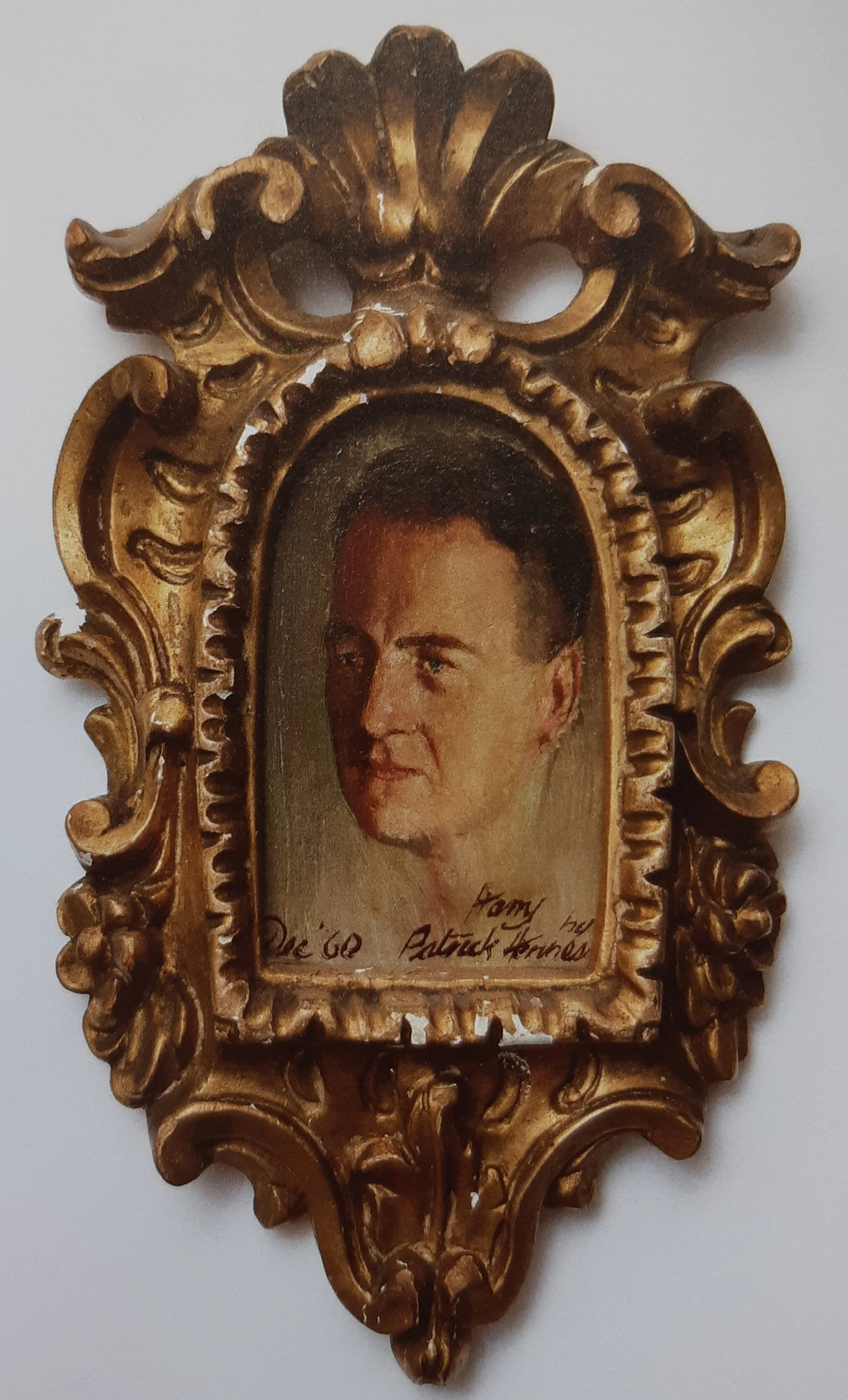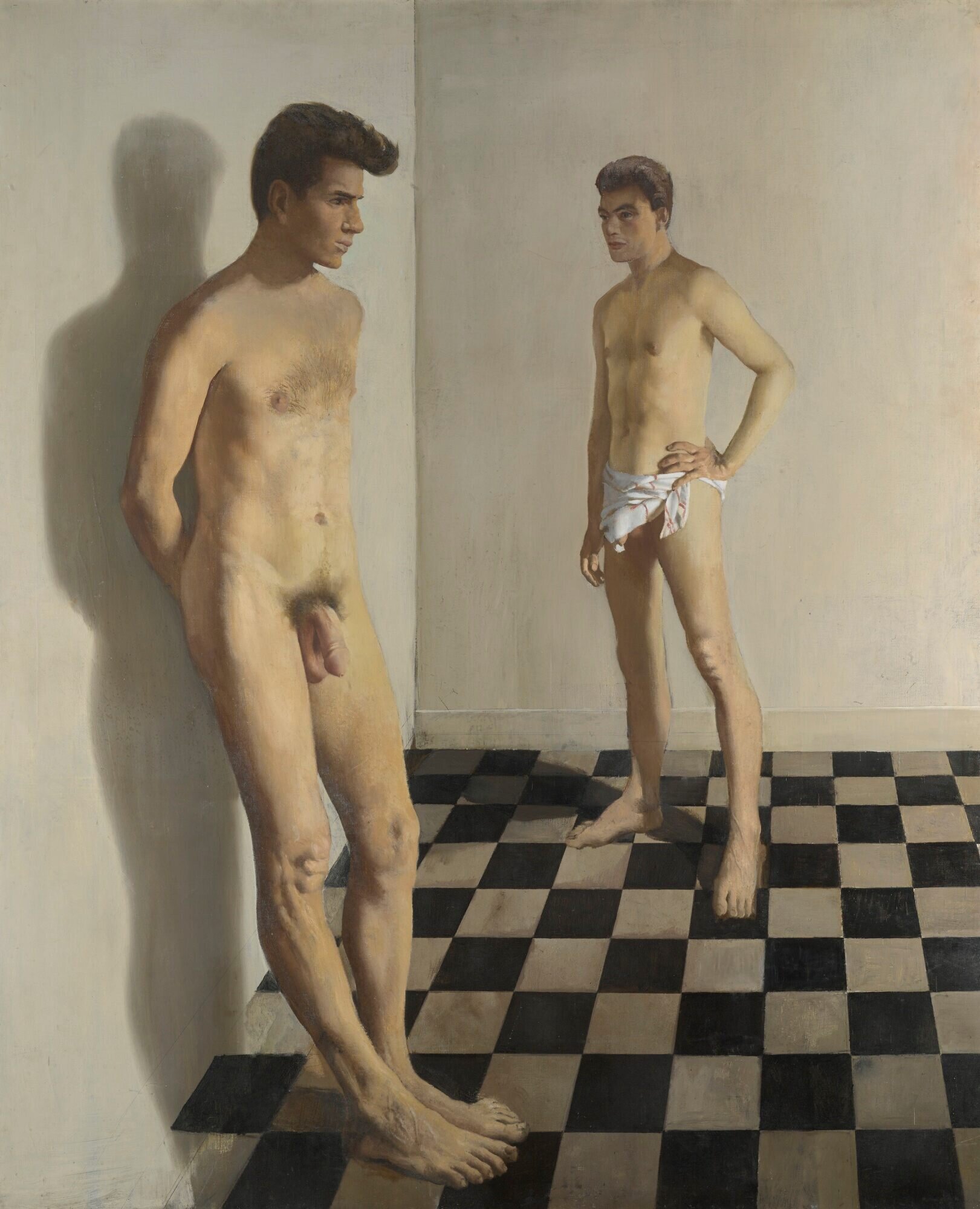PROFILE: Mr Patrick Hennessy
Atlas Beach, 1976, oil on canvas, 62cm x 87cm, Henry Miller Fine Art
Words - Henry Miller
Patrick Hennessy was born in Cork in 1915. His father died when he was only 2 years old and after his mother re-married, they moved to Scotland in 1927.
After graduating from school in Arbroath, he enrolled at the Dundee School of Art in 1933, where he excelled, earning a travelling scholarship to France and Italy in 1938. Whilst at college, he met fellow artist Harry Robertson Craig who will become his lifelong partner, although it won’t be until 1946 that they will share adjoining studios as well as a personal relationship that will last until Hennessy’s death in 1980.
‘The Painter Friends’, 1960; Patrick Hennessy by H. Robertson Craig; H. Robertson Craig, by Patrick Hennessy, oil on board, Private Collection.
‘The Painter Friends’, 1960; Patrick Hennessy by H. Robertson Craig; H. Robertson Craig, by Patrick Hennessy, oil on board, Private Collection.
Following his travels around Europe, during which he met up with ‘the Two Roberts’ (Robert Colquhoun and Robert MacBryde) Hennessy returned to Ireland in 1939 where he was rapidly accepted by the artistic community, exhibiting with the Dublin Painters Society and the Royal Hibernian Academy, the latter electing him to membership in 1949.
Throughout his career, but especially in the early years, he made a living from flower paintings, still-lives and portrait commissions. Alongside this conventional output however, he also created a body of work which was far more personal and, for its time, ground-breaking. He addressed issues of masculinity, sexual identity and homosexuality, which, for post-war Ireland where it was still illegal and considered morally repugnant, was highly extraordinary and extremely brave. His work, De Profundis (1945), the painting which announced his presence on the Dublin art scene, unashamedly and very publicly linked himself to Oscar Wilde’s final book of the same name.
Portrait-Figures (Self-Portrait), 1972, oil on canvas, National Gallery of Ireland Collection.
Some of his work may now seem tame to modern audiences. His exploration of homosexuality is coded, with figures set against land and seascapes, perhaps suggesting the social isolation and loneliness that many gay men would have experienced at the time. In a few of these paintings however, such as Men Bathing, Étretat(c.1954) and Kassim by the Sea (1976), another figure features in the distance, leaving the viewer to infer that the man in the foreground isn’t so alone after all!
However, not all of Hennessy’s work was as coded. Paintings such as Portrait-Figures (Self-Portrait) (1972) and In the Hamman (c.1965), could not have been clearer as to what was intended. The Tuileries Gardens is a well-known cruising ground in Paris, and Hennessy places himself firmly within the picture. In the Hamman, undoubtedly inspired by Hennessy’s own experiences in Tangiers, follows the tradition of mid-19th century classical painters like J-A-D Ingres, who identified the Turkish bath as a place of erotic interest; except in Hennessy’s picture, the erotic charge is between two men.
Jean-Auguste-Dominique Ingres (French 1780-1867), The Turkish Bath, 1862, Louvre Museum
Patrick Hennessy, In the Hammam, c.1965, Private Collection
From the early 1960s, he and Robertson Craig spent their winters in Tangiers, where Hennessy’s health problems were eased by the warm climate. In 1970, the couple moved there permanently and stayed for about ten years. Not only did Morocco suit Hennessy’s health, but Tangiers offered a far more liberal attitude to homosexuality. While it was, and still is, illegal there, Tangiers in particular, had gained a bohemian reputation as a place where homosexuality was tolerated, and it therefore became a focal point for many gay men from Europe and the US.
Atlas Beach (1978), which shows the model Kassim again, depicts a well-known gay bar in Tangiers. At first glance, one may think the title refers to the beach in the painting; however this is Tangier City Beach and the painting actually name-checks the Charles Atlas Beach Bar, upon which the figures are standing; a client who was well acquainted with the place in the 1970s, observed that the picture depicts the then daily routine of local men coming to the bar in the afternoon, on the chance of a gay liaison.
Men Bathing, Étretat, 1954, oil on canvas, Private Collection
Despite being often considered immoral as well as unfashionable, Hennessy had a successful career as a painter, exhibiting not only in Dublin, but also in London and America. He was undeniably a talented artist, and someone who made his own way, never bending to popular taste. The art critic Brian Fallon said of him “in Irish art he is a strange outsider, close in style perhaps to the RHA painters, but a thousand miles away from them in mentality”.
A major retrospective of Hennessy’s work Patrick Hennessy, De Profundis, held at the Irish Museum of Modern Art in 2016, featured both Kassim by the Sea and Atlas Beach; for anyone interested in his work, the accompanying exhibition catalogue is still available online.
Kassim by the Sea, 1978, oil on canvas, 62cm x 87cm, Henry Miller Fine Art








